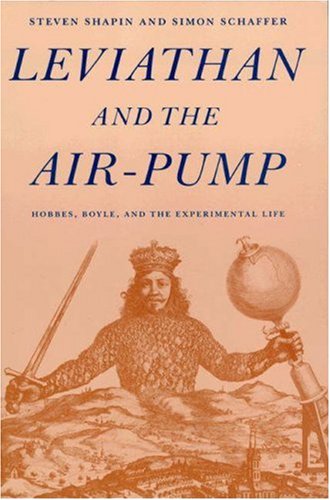Paul Feyerabend: Against Method (1975–) [EN, ES]
Filed under book | Tags: · anarchism, epistemology, history of science, knowledge, philosophy of science, science

Beyond Popper and Kuhn to an anarchist philosophy of science.
Paul Feyerabend’s globally acclaimed work, which sparked and continues to stimulate fierce debate, examines the deficiencies of many widespread ideas about scientific progress and the nature of knowledge. Feyerabend argues that scientific advances can only be understood in a historical context. He looks at the way the philosophy of science has consistently overemphasized practice over method, and considers the possibility that anarchism could replace rationalism in the theory of knowledge.
First published by New Left Books, 1975
Publisher Verso, London/New York, 1993
ISBN 0860916464, 9780860916468
279 pages
wikipedia (EN)
publisher (EN, 2010 edition)
google books (EN)
Against Method (English, Third edition, 1975/1993)
Against Method (English, original manuscript, no OCR)
Tratado contra el metodo: Esquema de una teoria anarquista del conocimiento (Spanish).pdf (Spanish, trans. Diego Ribes, 1986, added on 2013-9-26)
Steven Shapin, Simon Schaffer: Leviathan and the Air-Pump: Hobbes, Boyle, and the Experimental Life (1985)
Filed under book | Tags: · air, epistemology, experiment, history of science, knowledge, metaphysics, natural philosophy, philosophy, physics, pneumatics, science

“In the aftermath of the English Civil War, as people were groping for new forms of political order, Robert Boyle built an air-pump to do experiments. Does the story of Roundheads and Restoration have something to do with the origins of experimental science? Schaffer and Shapin believed it does.
Focusing on the debates between Boyle and his archcritic Thomas Hobbes over the air-pump, the authors proposed that ‘solutions to the problem of knowledge are solutions to the problem of social order.’ Both Boyle and Hobbes were looking for ways of establishing knowledge that did not decay into ad hominem attacks and political division. Boyle proposed the experiment as cure. He argued that facts should be manufactured by machines like the air-pump so that gentlemen could witness the experiments and produce knowledge that everyone agreed on. Hobbes, by contrast, looked for natural law and viewed experiments as the artificial, unreliable products of an exclusive guild.
The new approaches taken in Leviathan and the Air-Pump have been enormously influential on historical studies of science. Shapin and Schaffer found a moment of scientific revolution and showed how key scientific givens–facts, interpretations, experiment, truth–were fundamental to a new political order. Shapin and Schaffer were also innovative in their ethnographic approach. Attempting to understand the work habits, rituals, and social structures of a remote, unfamiliar group, they argued that politics were tied up in what scientists did, rather than what they said.”
Including a Translation of Thomas Hobbes’ Dialogus Physicus de Natura Aeris by Simon Schaffer
Publisher Princeton University Press, 1985
ISBN 0691083932, 9780691083933
xiv+440 pages
Reviews: Richard C. Jennings (British Journal for Philosophy of Science), Anna Marie Roos (H-Ideas), Richard Tuck (London Review of Books), J.L. Heilbron (Medical History), Katherine Pandora (UCLA Historical Journal), Aloysius Martinich (Journal of the History of Philosophy), Bruno Latour (Studies in the History and Philosophy of Science), P.B. Wood (History of Science), David Oldroyd (Social Epistemology, reply by William Lynch, reply by Oldroyd), Robert Kargon (Albion), I. Bernard Cohen (American Historical Review), Lawrence Busch (Science & Technology Studies), Mordechai Feingold (English Historical Review), Margaret C. Jacob (Isis), Owen Hannaway (Technology and Culture), Ian Hacking (British Journal for the History of Sciences), James G. Traynham (Journal of Interdisciplinary History), Richard S. Westfall (Philosophy of Science).
PDF
See also Introduction to 2011 edition.
Timothy Lenoir (ed.): Inscribing Science: Scientific Texts and the Materiality of Communication (1998)
Filed under book | Tags: · cartography, communication, germany, history of science, information, materiality, photography, science, semiotics, technology

Early practitioners of the social studies of science turned their attention away from questions of institutionalization, which had tended to emphasize macrolevel explanations, and attended instead to microstudies of laboratory practice. Though sympathetic to this approach—as the microstudies included in this book attest—the author is interested in re-investigating certain aspects of institution formation, notably the formation of scientific, medical, and engineering disciplines. He emphasizes the manner in which science as cultural practice is imbricated with other forms of social, political, and even aesthetic practices.
This book offers case studies that reexamine certain critical junctures in the traditional historical picture of the evolution of the role of the scientist in modern Western society. It focuses especially on the establishment of new disciplines within German research universities in the nineteenth century, the problematic relationship that emerged between science, industry, and the state at the turn of the twentieth century, and post-World War II developments in science and technology.
After an Introduction and two chapters dealing with science and technology as cultural production and the struggles of disciplines to achieve legitimation and authority, the author considers the following topics: the organic physics of 1847; the innovative research program of Carl Ludwig as a model for institutionalizing science-based medicine; optics, painting, and ideology in Germany, 1845-95; Paul Ehrlich’s “magic bullet”; the Haber-Bosch synthesis of ammonia; and the introduction of nuclear magnetic resonance instrumentation into the practice of organic chemistry.
Publisher Stanford University Press, 1998
Writing Science series
ISBN 0804727775, 9780804727778
476 pages

